In this issue:

NIDCR issued a brief Q&A regarding details of the forthcoming report Oral Health in America: Advances and Challenges, which will be published in Fall 2021. This comprehensive report will examine improvements in oral health over the past two decades, describe challenges and opportunities that affect oral health, and articulate a vision for the future, calling upon all Americans to take action. The report will provide key insights into the importance of oral health research and its impact on public health, including the importance of equitable delivery of oral health care.
|
NIDCR Recognitions at IADR/AADOCR/CADR General Session

NIDCR leadership, program staff, investigators, and trainees were among the presenters and honorees at the 2021 virtual meeting of the International Association for Dental Research (IADR); American Association for Dental, Oral, and Craniofacial Research (AADOCR); and Canadian Association for Dental Research:
- In a virtual interactive session with more than 100 participants, NIDCR Director Rena D’Souza, DDS, MS, PhD, provided an overview of NIDCR’s current programs and activities. She described her vision for achieving the institute’s mission to advance fundamental knowledge about dental, oral, and craniofacial health and disease and translate these findings into prevention, early detection, and treatment strategies that improve overall health for all individuals and communities across the lifespan. Recordings of this session and other NIDCR-related events can be viewed by registered meeting attendees on the IADR virtual platform.
- Lois Cohen, PhD, received the 2021 IADR Distinguished Scientist Award in Global Oral Health Research for her contributions to the field of social and behavioral research in dentistry.
- Rei Sekiguchi, DDS, PhD, and Ken Yamada, PhD, received The Journal of Dental Research Cover of the Year Award in recognition of their paper, "Single-Cell RNA-seq Identifies Cell Diversity in Embryonic Salivary Glands."
- Former NIDCR director and current investigator at the National Institute of Arthritis and Musculoskeletal and Skin Diseases, Martha Somerman, DDS, PhD, received the AADR Jack Hein Public Service Award, which honors service in promoting oral health research interests and activities to the public.
- Clinical research fellow Joshua Emrick, DDS, PhD, won first place among more than 20 contestants in the AADR Hatton Competition for his presentation at the meeting.
- Predoctoral fellow Jeremie Oliver, MS, received the Craniofacial Biology Group Award (Junior Category) for his presentation; Oliver works in the lab of Dr. D’Souza.
|

The National Academies of Sciences, Engineering, and Medicine (NASEM) will host a two-day virtual workshop titled “Understanding the Role of the Immune System in Improving Tissue Regeneration” on November 2-3, 2021. Co-organized by NIDCR, the free workshop will explore promising approaches to improve clinical outcomes of tissue repair and regeneration in patients. This workshop is part of NASEM’s Forum on Regenerative Medicine. Register here.
|
Back to top

In a commentary published in Science, White House Office of Science and Technology Policy Director Eric S. Lander, PhD, NIH Director Francis S. Collins, MD, PhD, and other leaders describe a vision for a new science entity, the Advanced Research Projects Agency for Health (ARPA-H). Proposed as a distinct division within NIH, ARPA-H would embrace a culture and strategies that encourage bold advances, aiming to accelerate biomedical innovation and adopt technologies and approaches to revolutionize health care and medicine. In one of a series of listening sessions convened by NIH and OSTP, NIH leadership, including NIDCR Director Dr. D'Souza, gave presentations and gathered feedback from stakeholders in several disease-related areas, including dental and craniofacial disorders.
|
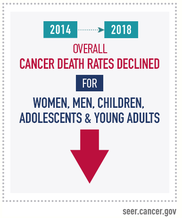
The Annual Report to the Nation on the Status of Cancer, released in July by the National Cancer Institute and collaborating organizations, found that overall cancer death rates have continued to decline in men and women for all racial and ethnic groups in the United States. However, oral cavity and pharynx cancer death rates increased for men from 2014 to 2018. The overall cancer incidence rates continue to increase among females, children, and adolescents and young adults.
|

Nicotine vaping in American high school seniors declined during the COVID-19 pandemic, according to results from the annual Monitoring the Future survey of substance use behaviors among US adolescents. The study, funded by the National Institute on Drug Abuse, suggested that a dip in the perceived supply of vaping devices, the rise of minimum age for vaping product purchases, and news reports on vaping-induced lung injuries may have contributed to the decline. Meanwhile, adolescent marijuana use and binge drinking did not significantly change during the same period.
|

After 28 years of service, Michael M. Gottesman, MD, will step down as the NIH deputy director of intramural research and will turn his focus to his work at NCI, where he is chief of the Laboratory of Cell Biology. During his leadership, Gottesman has coordinated activities and facilitated cooperation to improve research integrity, recruitment, and foster a diverse scientific workforce across NIH. Gottesman will remain in the position while NIH undertakes a nationwide search for his replacement.
|
Back to top
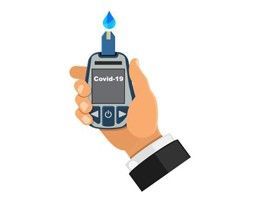
In a preliminary study funded by NIDCR, researchers developed a hand-held device that rapidly and reliably detects SARS-CoV-2 in artificial saliva. The portable sensor could eventually be used for low-cost COVID-19 testing in a variety of locations, including dental and health care settings, schools, the travel industry, and at home.
|
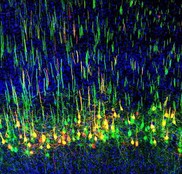
NIDCR Stadtman investigator Yuanyuan “Kevin” Liu, PhD, is decoding brain-spinal cord conversation to understand how the brain perceives touch and pain. His research revealed a brain area in mice that acts as a volume control for mechanical allodynia, a neuropathic pain condition where light touch is perceived as painful. The findings could have broader implications for other pain disorders and reveal potential treatment targets.
|
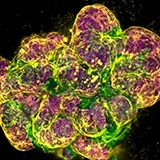
A video on NIDCR’s website shows a salivary gland growing into a mature organ and features NIDCR scientists as they describe how they achieved the first key step in creating an artificial salivary gland. The researchers are exploring ways to restore or replace damaged salivary glands to help patients who have lost salivary function from certain conditions, such as Sjögren's disease or radiation therapy for head and neck cancer.
|
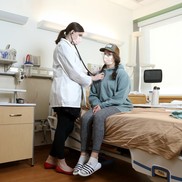
Pediatric endocrinologist Alison Boyce, MD, is looking for better ways to treat and diagnose fibrous dysplasia/McCune Albright Syndrome (FD/MAS), a disorder of the bones, skin, and endocrine system. In a video, she emphasizes the importance of engaging the FD/MAS patient community to understand their hopes and needs, which can inform research efforts to tackle the condition.
|

Scientists supported by NIDCR and the National Institute of General Medical Sciences discovered how to reprogram certain mouse skin cells with a topical treatment to make them respond to injuries more like fetal skin cells, which patch up wounds without leaving a mark. The findings suggest it may one day be possible to allow wounds to heal without compromising the integrity of the skin. The findings also may have implications for other medical afflictions that involve scarring, such as liver and lung fibrosis, burns, scleroderma, and scarring of heart tissue after a heart attack.
|
Back to top
Back to top
Visit the NIDCR website to sign up for NIDCR News.
Back to top
|